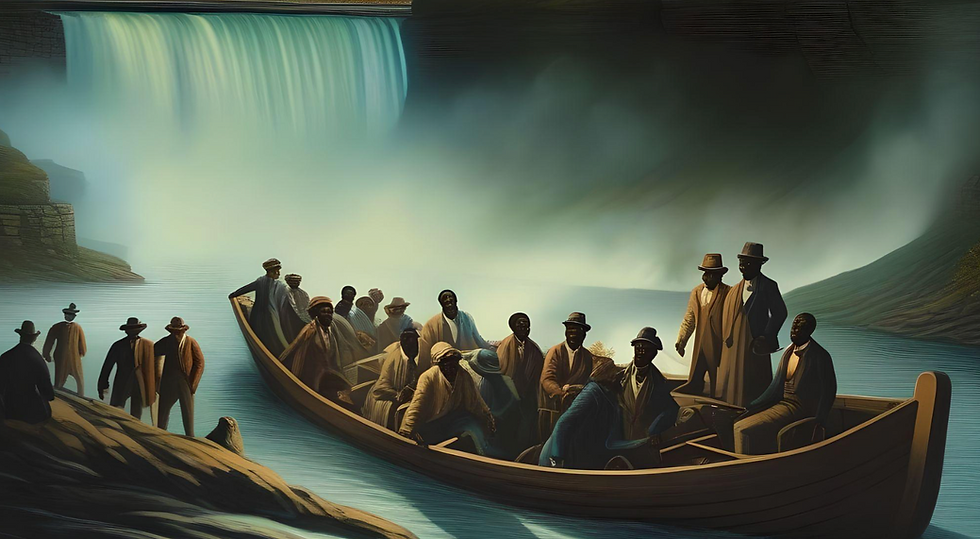
Niagara Falls, one of the world's most breathtaking natural wonders, holds a significant place in history as a crucial stop on the Underground Railroad. This network of secret routes and safe houses helped enslaved African Americans escape to freedom in Canada during the 19th century. Niagara Falls played a significant role in this remarkable chapter of American history.
The Underground Railroad was not an actual railroad but a network of individuals, both black and white, who provided assistance to fugitive slaves seeking freedom. Niagara Falls, with its strategic location on the border between the United States and Canada, became a vital crossing point for those fleeing slavery.
One of the most daring and dangerous routes to freedom involved crossing the Niagara River. Escaping slaves would often travel by foot or boat to reach the river's edge, where they faced the daunting task of crossing the suspension bridge or taking a boat ride from Lewiston/Youngstown to Canada.
No discussion of the Underground Railroad would be complete without mentioning the remarkable Harriet Tubman. Tubman, an escaped slave herself, made numerous trips to Niagara Falls, leading enslaved individuals to freedom. Her bravery and determination saved countless lives and made her a legendary figure in the fight against slavery.
Another inspiring story is that of Josiah Henson, a former slave who escaped to Canada through Niagara Falls. Henson, who later became a prominent abolitionist, crossed the falls with his wife and children, enduring great risks and hardships along the way. His journey serves as a testament to the resilience and determination of those seeking freedom.
Niagara Falls was home to several safe houses and sympathetic individuals who provided shelter, food, and guidance to fugitive slaves. These brave abolitionists risked their own safety to assist those seeking freedom, ensuring their successful passage to Canada.
To learn more about the role Niagara Falls played in the Underground Railroad, visitors can explore the Freedom Crossing Interpretive Center. Located near the falls, this museum offers exhibits and interactive displays that provide a comprehensive understanding of the Underground Railroad's history and the experiences of those who sought freedom.
While Niagara Falls is renowned for its natural beauty, it is essential to remember the significant role it played in the fight against slavery. Today, visitors can appreciate the falls' majesty while also reflecting on the bravery and sacrifices of those who risked everything to find freedom.
Niagara Falls' role in slaves escaping to freedom is a testament to the power of hope and the determination of those who fought for freedom.





